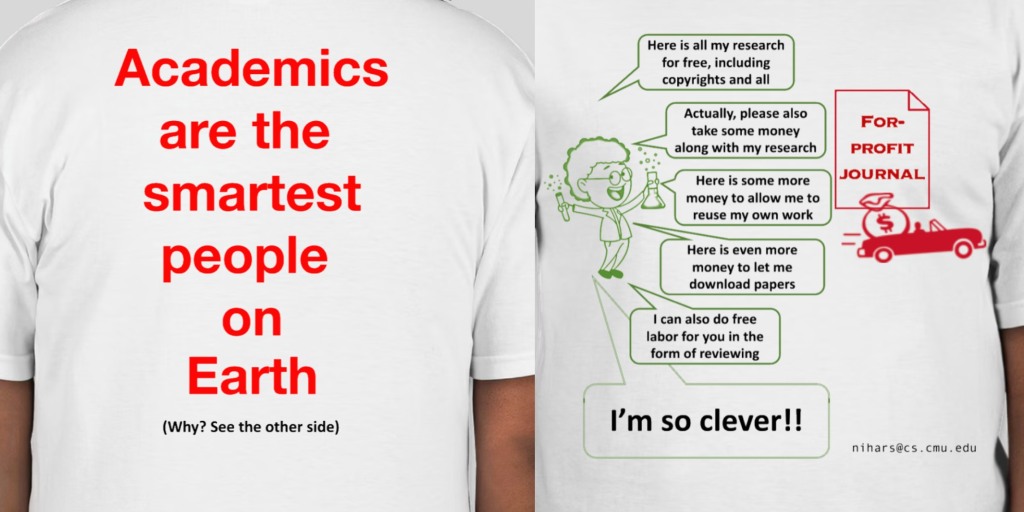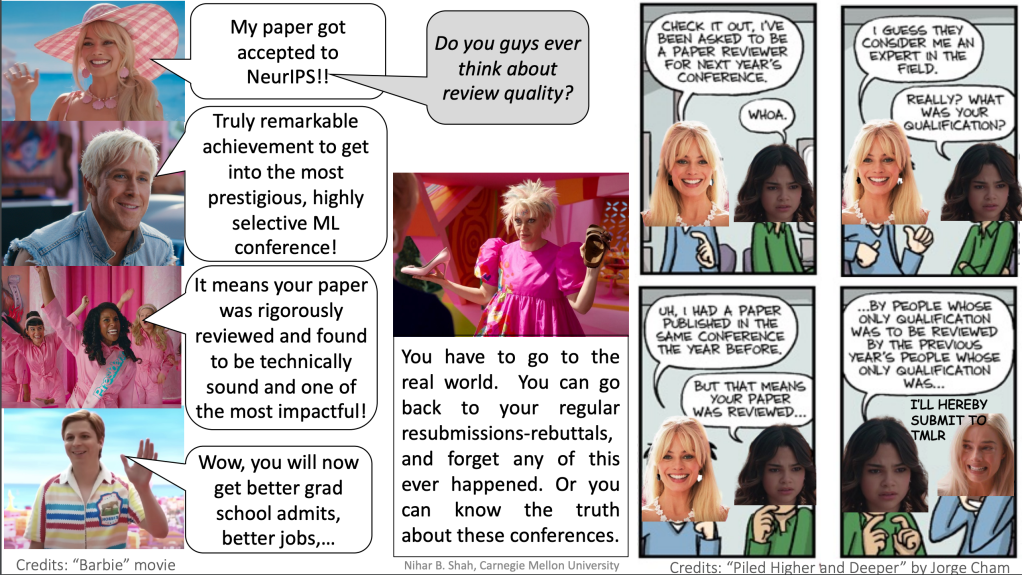
I discuss two unnecessary walls in academia that hinder access and progress.
Profit-walls
The first wall is built by for-profit academic journals. The T-shirt in picture above explains the problem. As a consequence of the prevalence of these for-profit journals, a large amount of money that was dedicated for scientific research, and could have been used to give out scholarships etc., goes to shareholders of these companies instead of being used for scientific purposes. Moreover, other researchers, especially those without resources to pay for the paywalls, cannot access this research. The US government recently mandated all government-funded research to be made public. However, this mandate has a significant loophole that these journals have exploited by now charging exorbitant “open access” fees from authors amounting to several thousand dollars per paper.
Selective-walls
A second wall constructed by academics concerns the unnecessarily high rejection rates in scientific publications. Many “prestigious” venues in computer science reject papers that are not deemed “interesting” enough, accepting roughly 20% of submissions. Scientific publishing is not a scarce resource allocation problem (unlike grant funding), but it has artificially been made into one. Furthermore, this selectivity is generally based on subjective criteria like perceived novelty or predicted impact, but several experiments have found these subjective evaluations to be quite unreliable and biased (see Sections 6 and 9.1 of this survey). Researchers pay for this “wall” by facing frequent rejections, creating an unsupportive environment for students, and wasting substantial time on resubmissions. Another issue with these barriers is that they shift priorities in the peer-review process. It results in an undue emphasis on selectivity, overshadowing the primary objective of peer review which is to ensure the rigor of published research.
Tearing down these walls
In response to the profit-walls, I advocate for publishing in non-profit venues. There are numerous not-for-profit options, and such options are thankfully widely prevalent in computer science. For instance, leading machine learning journals such as the Journal of Machine Learning Research (JMLR) and the Transactions on Machine Learning Research (TMLR) allow free publication and access. The story of JMLR’s origin is particularly notable: it was established following the mass resignation of the editorial board from a then-famous for-profit journal. Despite this, for-profit entities continue to seek entry into computer science publishing. My own publishing philosophy is that I do not submit papers to for-profit journals.
As for the selective-walls, journals such as TMLR and the Journal of Systems Research (JSys) in computer science, and the PLOS ONE interdisciplinary journal, prioritize correctness as the sole criterion for publication, rather than subjective measures like predicted impact. Personally, I prefer to avoid submitting to venues that prioritize subjective selectivity over substance, unless a collaborator prefers otherwise. There are several additional benefits to this approach. (1) Since the acceptance rate is not artificially lowered, more papers are accepted, reducing the number of resubmissions to other venues and thus decreasing the overall review load. (2) The higher acceptance rate diminishes the value of simply having an accepted paper. The hope is that this “hyperinflation” will motivate authors to prioritize the quality of each paper over the quantity, leading to fewer overall submissions. (3) It avoids the stress of dealing with arbitrary reviews and unnecessary resubmissions, allowing researchers to focus on producing high-quality research.
